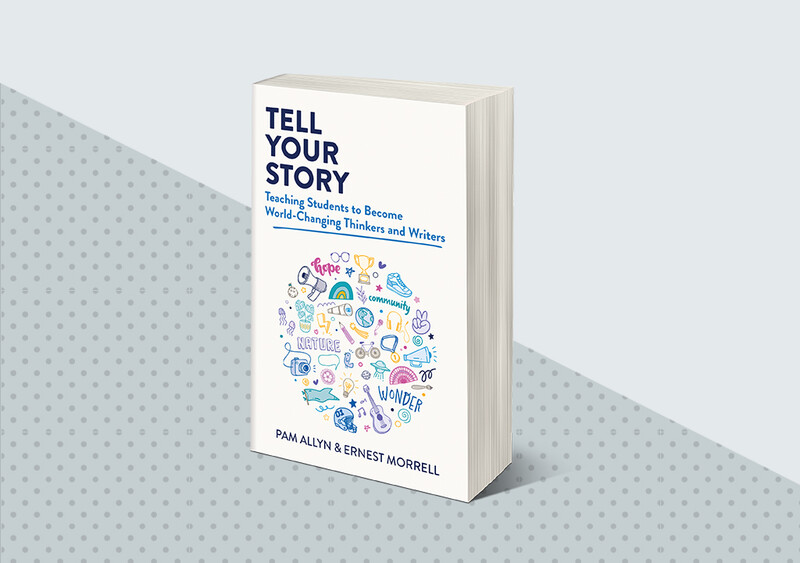“Unsung” minutes—those overlooked instructional moments outside of the core academic literacy block—are often underutilized, yet they’re brimming with possibility. This time has the potential to be filled with purposeful learning where students feel a deep sense of accomplishment and are invited to grow and succeed—quickly. These minutes add up.
In fact, afterschool and extended learning time equals thousands of additional minutes per year per student. We can also be proactive with family support and engagement to add even more minutes to the equation. Together, these unsung minutes can be game changers: they can become a foundation for academic growth that is built with purpose, possibility, and concrete academic outcomes.
A Promising New Approach
Afterschool and intervention programs often end up feeling like a less engaging, more frustrating version of the regular school day. Districts have commonly used leftover parts of the core program or extra modules from the same programs for expanded learning. But many of the students attending these programs are the very ones who didn’t thrive with that instruction the first time. Repeating the same approach won’t lead to different results. We need something new.
In April 2025, the California Department of Education issued a powerful, new, and interesting directive: schools should not use extra or leftover lessons or units from their core English Language Arts curriculum during expanded learning time. New or supplemental programming designed to stimulate, enrich, and motivate even the most reluctant learners must be used during those hours. This concept gives not just Californians but all of us the opportunity to rethink how we can put these supplemental minutes to good use with a highly motivational focus on both academics and engagement.
Unsung minutes can become a foundation for academic growth that is built with purpose, possibility, and concrete academic outcomes.
Finding Joy in Weekend Learning
For many years, I have been advocating for, and putting into practice, expanded learning with my summer school learning program LitCamp (and now, MathCamp). LitCamp provides rigorous Science of Reading curricula packaged in a camp-style format that transforms traditional learning time into vibrant, engaging experiences. It’s shown us how to bring children back to school, boost attendance, and actively engage learning mindsets all at once. Districts can bring this same “can do” camp spirit to weekend learning, using their funding to transform Saturday school into a lively, highly engaging new model for learning together, rather than a dull repeat of the school week.
When children experience skill-building opportunities outside of the traditional school week, they have the potential to feel more engaged and relaxed, giving us the opportunity to reach them academically in a new way. Saturday mornings become a time to build literacy through story and connection, and students begin to view literacy as part of their everyday lives, not just as school assignments. For example, in one district we are pairing decodable texts with writing instruction for Saturday school. The decodables are the “model texts” for writing. Quickly, our students are writing freely and powerfully, creating, making, and producing their own decodables. Saturdays give an extra lift and vigor to what is happening in SOR core programs during the school week. There is a strong synergy, but the work itself feels lighter, different, and more welcoming.
These weekend minutes shift from underutilized to purposeful as students practice what they’ve learned during the week while taking it a step further: moving along a skill-building continuum from phonics to writing, something I call “active phonics.” Here’s how to put a more dynamic and interactive experience with writing into practice:
- Focus on writing in Saturday sessions that reflects everyday childhood experiences such as problem solving, curiosity, play, and friendship.
- Select texts that are intentionally created to build phonics knowledge through targeted sound and spelling patterns aligned to the Science of Reading. And make sure they are fun and playful.
- Pair reading with writing prompts that invite students to reflect, tell stories, or imagine new ones. Prompts can encourage them to stretch out sounds, form sentences, or try writing in a new genre.
- Invite parents and caregivers to join for writing celebrations, sending them off with takeaway writing tips for home.
Making the Most of Extended Day
California’s 2025–26 budget includes a $4 billion investment in the Expanded Learning Opportunities Program. This initiative supports Transitional Kindergarten (TK)–Grade 6 enrichment across before school, after school, weekend, and intersession learning. California leaders and educators are making a clear statement: extended learning time matters—not just because it’s longer, but because it can be better. When designed with purpose, these programs can have a powerful impact on student outcomes and well-being. That message is already rippling beyond state lines.
But, like weekend learning, expanded learning must offer students a way back into their studies that feels fresh and engaging. High-impact tutoring, intervention, and enrichment must not be more of the same, or we will further alienate our students. We must offer an expanded learning experience that feels alive, relevant, and responsive.
Writing can again be a vital entry point. Writing is a profound tool for building literacy skills and improving outcomes across all subject matters. In often-overlooked expanded learning minutes, students can co-author nonfiction pieces about their favorite animals, their neighborhoods, or their families. They can write nature reports or newspaper articles about a topic they love. They can read a short, decodable story and imagine what happens next. They can perform a script, write a list, or explain how to do something they love.
These are not filler activities but focused, intentional opportunities to reinforce sound-symbol knowledge, build fluency, and strengthen comprehension. They also do the vital work of re-establishing a sense of belonging in the world of reading and writing, which many students have felt excluded from. Here are some ways to make the most of expanded learning:
- Give students opportunities to write in different genres: poetry, opinion pieces, letters, how-to guides, or comic strips. Use read-alouds to highlight genre features and connect to concepts like story structure and the author’s purpose.
- Combine phonics and writing through hands-on experiences. Invite students to stretch out sounds, form words, and apply spelling patterns. Connect handwriting to the sounds and letters they are learning that day; use starting dots and tracing to support letter formation.
- Use decodable read-alouds as mentor texts. Point out how authors use what they know about words to build structure, characters, and detail. Invite students to retell or extend the story in their own voice, reinforcing phonics while building narrative skill and comprehension.
We must offer an expanded learning experience that feels alive, relevant, and responsive.
Encouraging Meaningful Learning At Home
This is a great time to make a renewed and intentional commitment to purposeful and meaningful at-home learning. I often hear from multilingual families that evenings dissolve in tears (from parents and from children!) when the work sent home is hard to understand and feels unfamiliar or memorization-based. Caregivers feel defeated and alienated, unsure how to support literacy when the work feels inaccessible or disconnected from how their child learns best. Let’s rethink homework. Let’s rethink the experience of learning in the home. Let’s rethink family engagement.
We need to provide families with authentic and joyous tools to expand on the learning their child is doing in school. A decodable book, a writing page, or a blank book for children to write their own stories gives students a chance to be themselves and to share at home what they are learning in school. Dr. Ernest Morrell and I have created a series of short videos, with samples available on YouTube, designed to support parents and caregivers by guiding them from academic skill-building to joyful bonding and back again, with writing at the center and resources to support learning.
Stories shared at home, passed down through tradition, or sparked by everyday moments can serve as a motivational lever for writing and reading in school. When students write about their families, cultures, interests, and memories, in English and their home language, they build confidence, print fluency, and a sense of belonging. Writing helps them internalize language patterns, and their cultural knowledge becomes a strength, not something left at the door. Here are some ideas to support effective at-home learning:
- Simple literacy workbooks add structure without making home time feel like school. Send home joyful, slim workbooks and decodable texts that include handwriting and spelling practice and a variety of opportunities for students to write their own stories.
- Encourage families to weave storytelling into daily routines, such as at dinner, before bed, or during special moments. Simple prompts like “One thing that makes our family special is,” “When I was little,” or “If I could create my own holiday, I would” can inspire even reluctant learners to write full pages.
- Invite students to write short personal stories or seven-word memoirs and place them around the classroom or gift them to loved ones.
Minutes Make a Difference
These unsung minutes, thousands of them for every child, are a wise investment we can make as education leaders. We must take them seriously. Children don't see the difference in value between what’s happening in a minute of core literacy or math instruction and the minute that happens at three o’clock or on a Saturday or in those moments before bedtime. For them, every minute counts. Let’s make the opportunities we share with them for learning truly reflect that. It will make a world of difference for all our children.
Copyright © 2025 Pam Allyn
Tell Your Story
Learn how to increase students' skills as writers and storytellers with an innovative, inclusive, and empowering framework for teaching writing that centers student voice.









